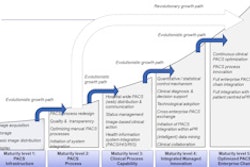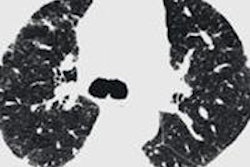It can be challenging to determine the factors behind a successful PACS deployment. But a PACS performance framework developed by Dutch researchers may offer some important clues for hospitals seeking to maximize their investment.
In an article published online recently in the Journal of Digital Imaging, Rogier Van de Wetering and Ronald Batenburg of Utrecht University validated their conceptual model for PACS performance on a sample of 64 hospitals in the Netherlands that use PACS. They found that how well PACS was aligned with hospital goals had a significant impact on the efficiency and effectiveness of the implementations.
"This implies that hospital-specific resources, capabilities, and the use of PACS are strongly interrelated, and integrative management is essential to optimize the added value of PACS," they wrote.
There is currently a lack of scientific knowledge about the mechanisms that govern successful PACS performance and deployment in hospitals, according to the researchers (JDI, 22 January 2014).
"Owing to the large financial expenses that go along with PACS, there is a pressing need for models or frameworks that are adequate to rigorously assess and evaluate the performance of PACS, so that improvement guidelines for strategic planning and optimization plans and future investments can be systematically derived," they wrote.
As a result, the group set out to develop an integrative model that could empirically assess the maturity and organizational alignment of PACS as well as their effects on PACS performance. They also wanted to produce "improvement guidelines for strategic planning and optimization plans of PACS maturity and performance within hospitals."
PACS Maturity Model
Previous work by Van de Wetering and Batenburg had led to the development of their PACS Maturity Model, which defined the five levels of PACS maturity hospitals can achieve.
"An important omission of the model is, however, that the development through the maturity model might differ by organizational domains and that maximizing maturity might not be effective or 'optimal' in all circumstances," they wrote.
As a result, they sought to include analysis on how PACS is strategically aligned with business strategies, goals, and needs.
Their resulting integrative PACS performance model combined three concepts:
- PACS maturity as a concept to define PACS and its elements (i.e. classifying PACS according to their stage of development and evolutionary plateau of process improvement)
- PACS alignment as the concept to complement the organizational dimensions of PACS (i.e. investments made in organization dimension related to PACS should be balanced out in the organization in order to obtain synergizing benefits)
- PACS performance as the added value of PACS within hospitals
The main hypothesis of the framework was that the "alignment of PACS, as represented by the multifactorial nature of five organizational domains and their related maturity levels, has a positive relationship on PACS performance, as represented by the multifactorial nature in terms of hospital efficiency and clinical effectiveness and their related items."
As described in business IT research in the literature, the five organizational domains include: strategy and policy; organization and processes; monitoring and control; information technology; and people and culture, according to the researchers.
After the conceptual model was developed and set of testable hypotheses were produced, the researchers utilized structural equation modeling to validate the model and hypotheses by surveying a research sample of 64 Dutch hospitals that use PACS.
A significant effect on performance
They found that PACS alignment, which was modeled as a higher-order construct of five complementary organizational dimensions and maturity levels, has a significant positive effect on the PACS performance.
"The holistic approach towards PACS alignment and maturity provides a framework for clinical practice," they wrote.
The validated PACS performance framework can also offer a useful checklist for hospitals to systematically identify operational and technical improvement opportunities, according to the researchers.
"It should be recognized, however, that improvements often imply change of existing processes, organization structures and touch the interest of stakeholders," they wrote. "As with any (IT) change project in organizations, this cannot be prepared or executed in a vacuum; hence, internal stakeholders and potential (and current) vendor should collaborate during a replacement (or upgrade) process of original imaging networks."
The authors recommend that hospitals should follow a dual strategic PACS maturity planning perspective that encompasses a continuous process of change and adaptation as well as the coevolvement and alignment of PACS.



















